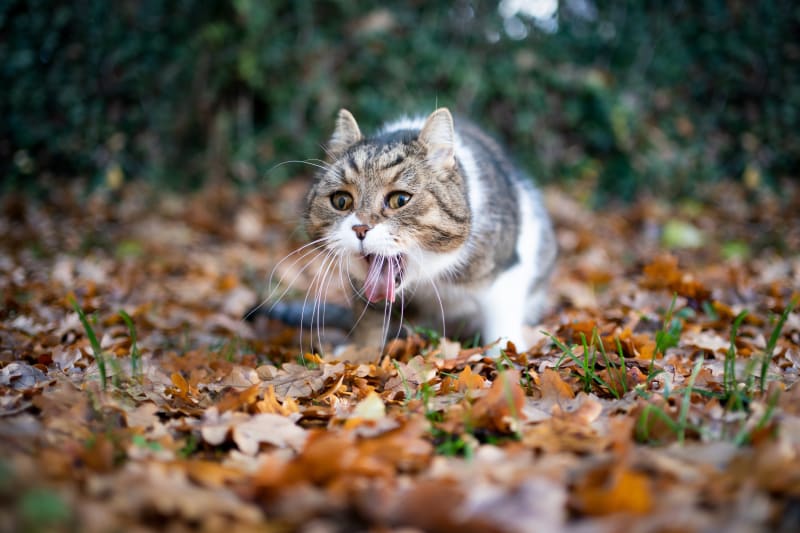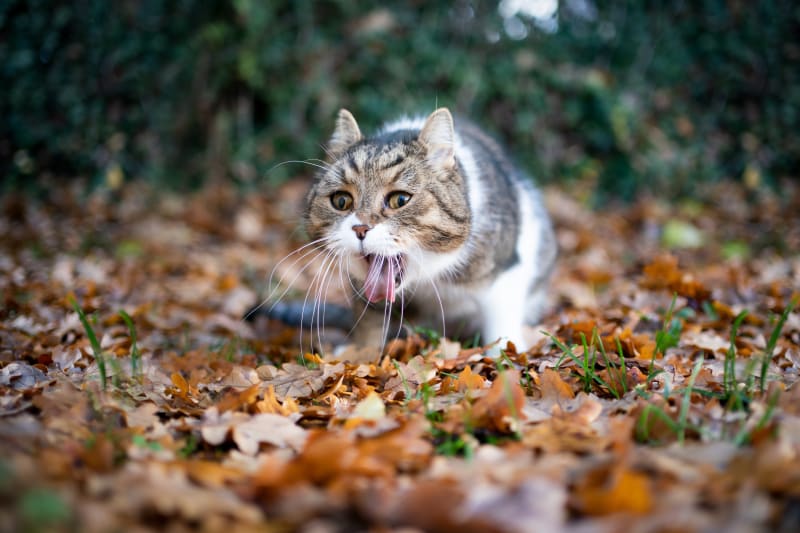Have you ever walked into your home, expecting to find your feline friend lounging on their favorite cushion, only to discover them instead curled up in a ball, dry heaving and refusing to eat?
Cat Dry Heaving and Won’t Eat: A Concerning Combination
As any cat lover knows, cats can be notoriously finicky about their food. But when your normally enthusiastic eater suddenly turns up their nose at their favorite kibble or canned goods, it’s not just a matter of pickiness – it’s often a sign that something is wrong.
The Importance of Identifying the Cause
When your cat is both dry heaving and refusing to eat, it’s essential to take action quickly. Not only can this behavior be a sign of an underlying health issue, but it can also lead to more serious complications if left untreated. In this post, we’ll explore what might be causing your cat’s sudden change in appetite and behavior, as well as the steps you can take to help them recover.
What’s Behind Your Cat’s Dry Heaving?
The first step in addressing your cat’s dry heaving and refusal to eat is to identify the underlying cause. While there are many possible explanations for this behavior, some common culprits include:

The process of elimination is key when trying to determine what’s behind your cat’s dry heaving and refusal to eat.
Gastrointestinal Issues
A gastrointestinal upset, such as inflammatory bowel disease or a foreign body obstruction, can cause cats to exhibit this behavior. If your cat is experiencing vomiting, diarrhea, or abdominal pain in addition to dry heaving and refusing to eat, it’s essential to seek veterinary attention immediately.
Toxicity
Cats may also display dry heaving and a lack of appetite if they’ve ingested something toxic. This could be anything from household cleaning products to certain plants or medications. If you suspect your cat has gotten into something hazardous, it’s crucial to act quickly and contact your veterinarian or the ASPCA Animal Poison Control Center (1-888-426-4435) for guidance.
Other Possible Causes
In addition to gastrointestinal issues and toxicity, other potential explanations for your cat’s dry heaving and refusal to eat include:
- a dental issue or oral pain,
- a respiratory problem, such as asthma or pneumonia,
- a systemic infection or sepsis,
- or even a psychological disorder like anxiety or stress.
As you can see, there are many potential causes for your cat’s dry heaving and refusal to eat. In the next section, we’ll explore what steps you can take to help your cat recover and get back to their normal self.
For more information on common health issues in cats, visit the American Animal Hospital Association (AAHA) website at https://www.aaha.org/pet_owners/common_health_issues_in_cats.aspx.
Expert Consultation for Your Furry Friend
When your cat’s health is a concern, you want expert advice. Our medical and health experts are here to help.
Consult an Expert TodayIn our previous discussion about cat dry heaving and refusing to eat, we explored the concerning combination of these behaviors and the importance of identifying their underlying causes.
Summarizing the Key Points
We covered several possible explanations for your cat’s sudden change in appetite and behavior, including:
- Digestive issues
- Bacterial or viral infections
- Food allergies or sensitivities
- Mouth or dental problems
- Stress or anxiety
- Gastrointestinal foreign bodies
By understanding the potential causes of your cat’s dry heaving and refusal to eat, you can take the first steps towards helping them recover. But what can you do to support your feline friend during this challenging time?
Supporting Your Cat’s Recovery
While it’s essential to consult with a veterinarian for professional guidance, there are some general steps you can take to help your cat feel more comfortable and encouraged to eat:
- Offer small, frequent meals rather than one large meal
- Try different textures or flavors of food
- Provide plenty of fresh water
- Keep an eye on your cat’s stool quality and consult with a vet if you notice any changes
A Strong Conclusion
If your cat is dry heaving and refusing to eat, it’s crucial to act quickly to address the underlying cause. By identifying potential explanations for their behavior and taking steps to support their recovery, you can help your feline friend feel more comfortable and encourage them to start eating again. Remember, prompt veterinary care is essential in these situations, so don’t hesitate to schedule an appointment with a professional if you’re concerned about your cat’s health.
By working together with your veterinarian and making some simple adjustments at home, you can help your cat recover from their distressing episode of dry heaving and refusal to eat. And who knows – with the right care and attention, your feline friend may be back to their normal energetic self in no time.
What is anemia caused by folic acid deficiency: Uncover the surprising link between a lack of folic acid and anemia, and find out how to prevent this common condition.
Frequent urination a warning sign of high blood sugar: Don’t ignore that constant urge to pee! Learn about the connection between frequent urination and high blood sugar, and find out how to take control of your health.




